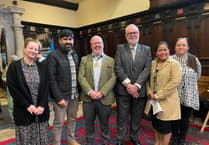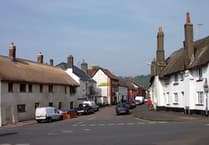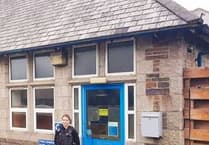THORVERTON History Society members were delighted to welcome Elly Babbedge to introduce members to famous local celebrity from the past, Samuel Bellamy.
A genealogist, educator and local historian, Elly gave members an insightful and flavoursome feel for the pirate life of the 18th century, during her talk on Friday, February 23.
Born in Hittisleigh, near Crediton, a small hamlet of only 15 names in 1641 to the west of Exeter, on February 23, 1689 (and who died on April 26, 1717), Samuel was destined to be known variously as "Black Sam" Bellamy, Black Bellamy, Prince of Pirates and Robin Hood of the Sea.
He is believed to have been the sixth child of Stephen Bellamy and Elizabeth Pain.
Samuel left his home and served in the Royal Navy, being released in 1714 at the age of 25.
Trained and skilled in the sea, with experience of battle in the War of Spanish Succession, it is not surprising that he reappears in 1715 in Cape Cod in the Colonies, where he teams up with one Paulsgrave Williams.
Williams was a 39-year-old silversmith with a wife and family. His father, who died in 1687, had been the Attorney General of Rhode Island.
At some point in the friendship, Williams convinced Bellamy to go treasure hunting in Florida.
Spanish plate fleets had been wrecked in a storm off the coast of Florida in 1715, and many men headed down there to dive on the wrecks to try and recover some of the treasure reported to have sunk in the storm.
Historians agree that it was probably Williams who had the money to finance the trip.
Disappointed in their original endeavour, by March they owned two canoes known locally as periaguas which could be manned by armed men and were very manoeuvrable, allowing them greater success in plundering both French and Spanish ships.
Such was their success that they impressed local pirate celebrities such as Benjamin Hornigold who operated out of New Providence in the Bahamas and Edward Teach (Blackbeard).
In teaming up with these mentors with bigger captured ships, and fearsome reputations, Bellamy began to reap substantial rewards.
Part of the reason for their ease in capturing vessels was reputation established by previous pirates who had tortured sailors, particularly captains, who did not immediately surrender upon being approached by a ship bearing a Jolly Roger and firing a shot across their bow.
The early 1700s was a time of low pay for sailors, with generally no chance of advancement.
Most did not feel any loyalty toward their captain or the company that owned whatever ship they served on, and thus saw no reason to sacrifice themselves defending the ship.
Most hoped that by giving up and staying out of the way they would survive the pirate encounter unscathed.
That being said there is no record that Captain Bellamy and his crew ever used force or violence to capture any of the scores of vessels they plundered.
Indeed, Sam Bellamy was unusual in that he held to his morals and established a Pirate Code which attracted crews to his team and also meant that he had no qualms in attacking English slave ships laden with goods and valuables on their last leg of the Triangular Trade.
He was well-known for being both generous and egalitarian with his crew and equally rewarded and freed slaves, providing a rare example of a notable reputation which inspired loyalty, early enfranchisement and opportunity for sailors of colour.
His own epithet of Black Sam seems to come from his personal appearance with dark hair and skin.
In 1717 his crew took the 300 ton galley, the Whydah, laden with ivory, indigo, gemstones, weapons and gold and silver coins. However, less than two months later the ship went down off Cape Cod.
The accident was succinctly described by Thomas Davis in his deposition before his trial for piracy in Boston, Massachusetts, in October of 1717: "The Ship being at an Anchor, they cut their Cables and ran a shoar, in a quarter of an hour after the Ship struck, the Main-mast was carried by the board, and in the Morning She was beat to pieces.
"About Sixteen Prisoners drown’d, Crumpstey Master of the Pink being one, and One hundred and forty-four in all." (“Trials,” 2:318)
"Those men on the Whydah who could, attempted to save themselves, but 'the bitter ocean temperatures were cold enough to kill the strongest swimmer within minutes. Other crew members were crushed by the weight of falling rigging, cannon, and cargo as the ship, her treasure, and the remaining men on board plunged to the ocean floor, swallowed up by the shifting sands of the cape.” (“Trials,” 2:318)
"Local residents arrived on the shore the next morning to find that 'more than a hundred mutilated corpses lay at the wrack line with the ship’s timbers.” (Clifford & Kinkor, 131)
The fascinating thing is that more than 200 years later the wreck has been discovered and salvaged and items retrieved which now form a fascinating and growing display at the Manitoba Museum and also a New Netflix series the "Lost Pirate Kingdom". Well worth watching!
K A Marshall




